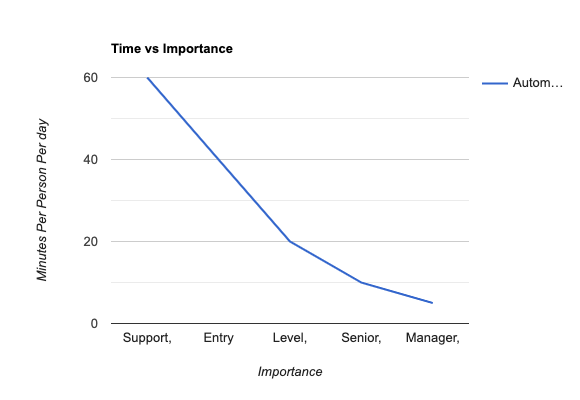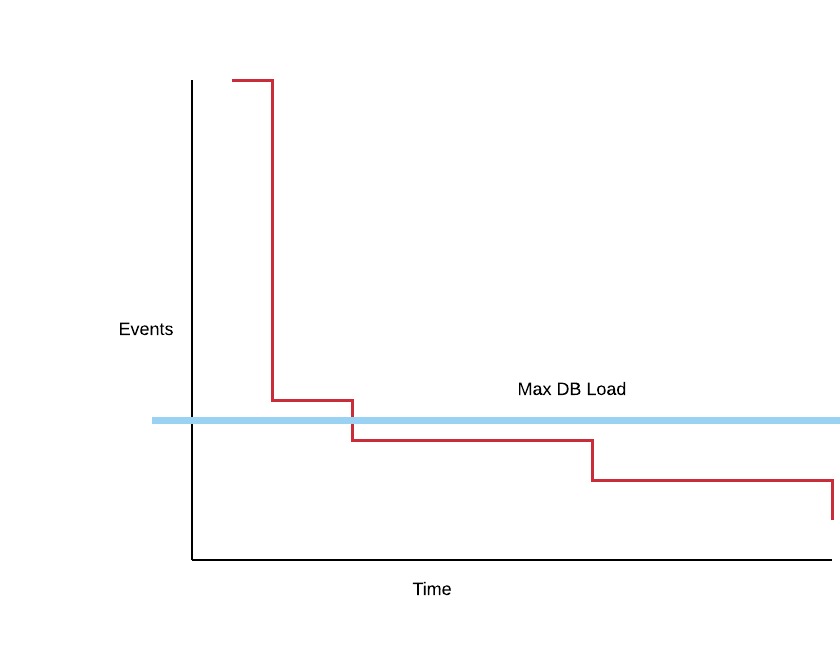The prospect of automating manual tasks emits a siren song to most developers. Like a siren, the call often leads you straight into disaster. Best intentions often end up leaving companies with code that’s more expensive to maintain and less useful than human labor. Reports and tasks become a leaky faucet for productivity.
Here are six questions to ask yourself, or a developer, before dancing to the automation music:
How often is the task likely to change?
Weekly Business Intelligence reports change monthly, monthly ones change every quarter, and quarterly ones change every year. They are never stable enough to be worth automating by an outside developer. This is why BI tools that let non-technical users semi-automate reports are a 5 billion dollar industry.
On the other hand, regulatory and compliance reports are likely to be stable for years and make great targets.
If a task won’t be executed at least 10 times between changes, it probably won’t be worth automating.
How long is the task likely to continue?
Some tasks are likely to continue “forever”. Archiving old client data, scrubbing databases and other client onboarding/offloading tasks fall into this category.
Some tasks are never going to come up again.
If a task won’t be executed at least 5 more times, it probably won’t be worth automating.
How much human effort does the task consume, and for whom?
You can automate turning on the office lights in the morning with a motion detector, but it won’t pay off in terms of time saved from flipping a switch.
How much of an interruption is doing the task? Turning on the lights on your way in the door isn’t an interruption for anyone. Phone support manually resetting a user password isn’t an interruption, but having the CFO process refunds for clients is a giant interruption.
Even if the reset and refund are both a single button click that takes 15 seconds, pulling the CFO away is a much bigger deal. Also the context switch for the CFO will be measured in minutes because she’s not processing refunds all day long.
Use a sliding scale based on time and title. For entry level, don’t automate until the task takes more than an hour per person per day. For the C-Suite anything over 5 minutes per day is a good target.

How much lag can automation save your clients?
Clients don’t care how long the task takes, they care about the lag between asking and receiving. It doesn’t matter that processing a refund only take 5 minutes if your team only processes refunds once a week.
If the client lag is more than a day, consider automating.
Is the Task a real process, or are you cleaning up the effects of a bug?
Software bugs can do all sorts of terrible things to your data and process, but after the first couple of times, the damage becomes predictable and you’ll get better at fixing the damage.
Automating the fix is one way of fixing the bug. That’s how bugs become features.
If you don’t want to make the bug an official part of your software, don’t automate the fix.
How common and expensive are mistakes?
Mistakes are inevitable when humans are manually performing routine tasks.
Mistakes are inevitable when developers first automate a routine task. Assume that developer mistakes will equal one instance of a manual mistake.
For an automation to save money you have to expect to prevent at least 2 manual errors.
As an equation:
[Cost to Automate] + [Cost of a mistake] < [Cost of a mistake] * [Frequency of mistakes]
Because the cost of mistakes is relatively easy to quantify, tasks with expensive mistakes are usually automated early on.
Conclusion
Developers always want to automate things, sometimes it pays off, sometimes it’s a mistake.
If you ask these six questions before automating you’re much more likely to make the right choice:
- How often is the task likely to change?
- How long is the task likely to continue?
- How much human effort does the task consume, and for whom?
- How much lag can automation save your clients?
- Is the Task a real process, or are you cleaning up the effects of a bug?
- How common and expensive are mistakes?










